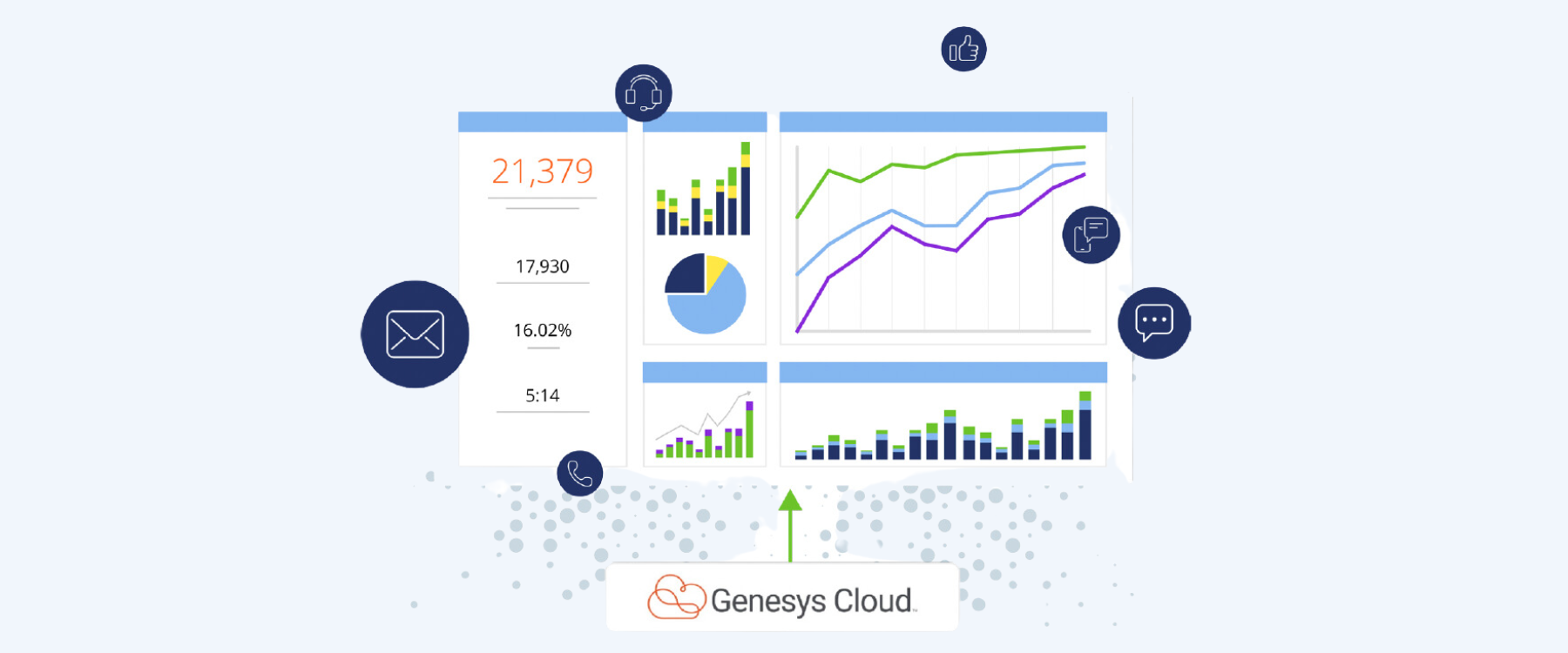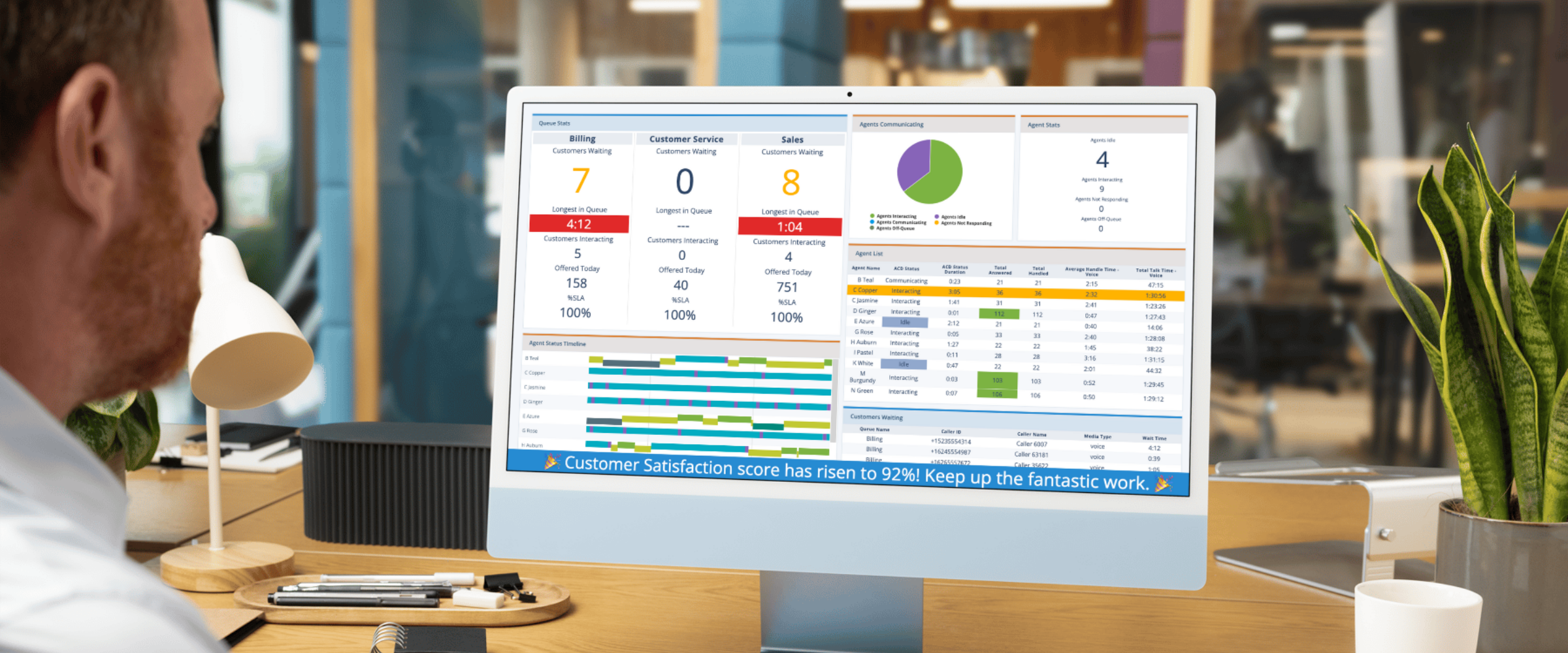The universal truth of running a call center is that the list of KPIs you could measure is endless. The challenge becomes understanding and measuring the right call center KPI for each stakeholder group – executives, managers, team leaders and customer service agents – within your organization. Here, we review and analyze three popular KPIs that affect all key stakeholder groups, as well as your customers.
1. Average Handle Time (AHT)
What is Average Handle Time?
Average Handle Time (AHT) is the backbone of a contact center. AHT measures the average length of customer interaction from start to finish. As soon as a customer interaction with an agent is initiated, AHT is tracked. Once the customer service agent completes the customer interaction, including post-conversation documentation and wrap-up, AHT tracking ends. AHT is a broad metric for customer service, considering many aspects of customer journeys while translating that journey directly into profits for your organization.
Why is Average Handle Time Important?
Having a low Average Handle Time often equates to using resources more effectively and efficiently. As a result, the shorter the interactions, the more productive your agents are and the more revenue you generate. AHT is a helpful starting metric to measure your service level opportunities and team efficiency. It also identifies training opportunities quickly.
However, low Average Handle Time doesn’t necessarily mean quality service. A rushed customer service experience can negatively impact your organization’s customer satisfaction rates (CSAT). The key is to find a balance between low AHT but still maintaining a high CSAT average.
How to Improve Average Handle Time
AHT is a popular call center KPI because it’s easy to pinpoint how solutions can be implemented to address areas of concern. Consider the following solutions to improve your call center’s Average Handle Time.
- Intelligent call routing: Improve your Interactive Voice Response (IVR) system to reduce customer transfers and hold periods. Use top-level auto attendants and more granular IVRs with skills-based routing to route calls to the proper departments more accurately.
- Continuously train agents: Develop ongoing training that gives your agents the foundational knowledge and skills they need to perform their roles. This will help agents provide customers with fast, accurate, and cost-effective solutions.
- Empower your teams with technology: Outdated or confusing platforms will slow your team down. Provide tech-forward, agile platforms and dashboards for your agents to keep everyone on the same page.
- Support portals and knowledge bases: Build a centralized, easy-to-access database that your agents (and sometimes customers) can reference to find concise solutions to their problems. Empowering self-service options helps reduce the call queue.
2. Average Speed of Answer (ASA)
What is Average Speed of Answer?
Average Speed of Answer (ASA), or Average Wait Time (AWT), measures how quickly a customer service representative answers an inbound call from a customer. The time a customer waits in a queue is factored in when calculating ASA. However, time spent in an IVR system does not count toward ASA.
Why is Average Speed of Answer Important?
When evaluating call center performance and customer satisfaction, ASA is one of the most influential metrics. Customers who wait too long for an answer are more likely to abandon the call. Long wait times never create a positive customer experience, even when customers are connected with an agent. A low Average Speed of Answer can negatively affect customer satisfaction, increase operational costs, and reflect an ineffective IVR.
How to Improve Average Speed of Answer
The same actions that help improve Average Handle Time can also improve Average Speed of Answer. Here is a further analysis of the core areas for improving Average Speed of Answer rates.
- Call routing matters: Proper call routing and understanding your customer’s journey will allow you to route your customers to the right agents faster and more accurately.
- Call center software is essential: Empower your agents with the information and tools they need to resolve a customer’s issue quickly and at the first point of contact. Improved routing, artificial intelligence integrations, and automation can all be part of this process.
- Centralize your information: Switching between multiple platforms to document or integrate transfers into your workflow leaves your team open to roadblocks. The more roadblocks they face, the harder it will be to resolve customer issues quickly and on first contact.
3. Average Transfer Rate
What is Average Transfer Rate?
Average transfer rate measures the number of calls transferred to another team member or department.
Why is Average Transfer Rate Important
Transferring customers frequently between departments negatively impacts the customer experience. Operational costs also increase with high transfer rates. Your average call transfer rate is a good indicator of where interactions may get misguided within your center’s IVR system or an indicator of lack of knowledge amongst certain agents.
How to Improve Average Transfer Rate
The right analytics and alerts can help identify regularly transferred calls from one agent or department to another. Consider the following solutions to improve Average Transfer Rate.
- Improve your IVR System: Rework your IVR system menu to eliminate any customer confusion so they can choose the correct option to route them to the proper team.
- Invest in training: Provide your agents with the resources and training necessary for them to resolve customer issues quickly and at the first contact point.
Measure the Right KPIs
Measuring call center KPIs gives invaluable insight into customer service success, agent performance, and overall center operations. We’ve detailed the three popular call center KPIs, but there are many more.To name a few:
- CSAT
- Service Level
- Answer Rate
- Agent Availability/Idle Time
It’s essential to select KPIs based on the specific characteristics of your call center or contact center.If you’re a call center manager or leader looking to unlock the power of your customer interactions, Brightmetrics™ is here to help. Learn more about improving your call center customer experience with Brightmetrics here.




